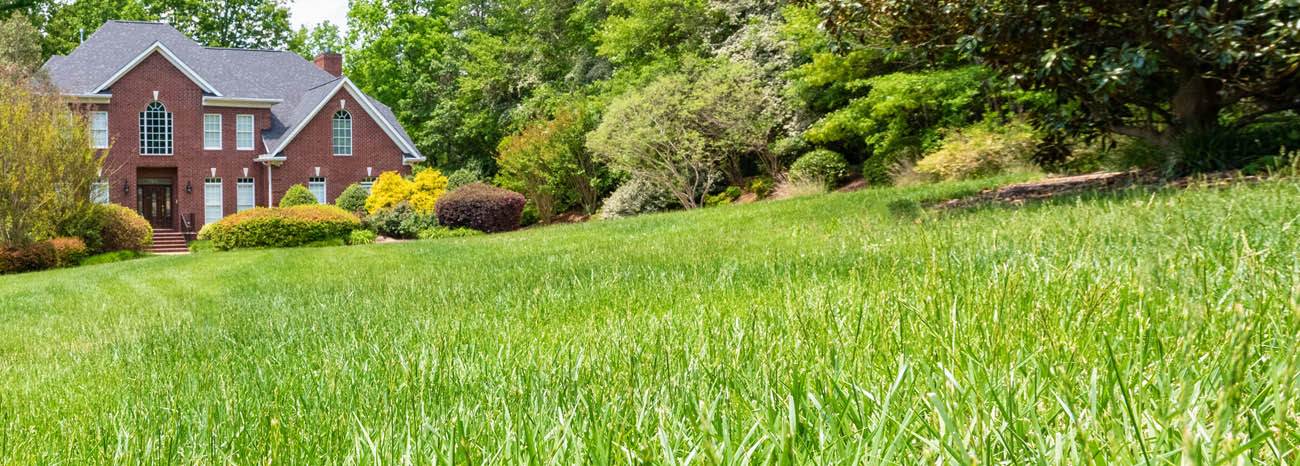Pennsylvania can be a tough region to maintain pristine grass coverage because of our harsh winters and hot summers. As experts, we are trained to create beautiful sceneries that stand the test of time, but to create some of these masterful visuals, we have to choose the right grass type.
Below, we will review your options and provide recommendations for selecting the right type of grass that will be durable for Pennsylvania’s climate.
Pennsylvania’s Climate and Soil Conditions
Pennsylvania has different climate zones, with the northern regions being a lot colder than the southern areas. These zones do affect the grass and how it grows. You also want to keep in mind that the state has four seasons, which means the north also tends to face much harsher winters while the south might enjoy a much tamer seasonal change. Weather has a big effect on how grass grows and if you’re not careful, it can lead to a patchy and unpleasant appearance.
Along with the different climate zones, we also have to look at the soil type. Pennsylvania has two common ones: loam, clay, and sandy. Most professionals prefer the loam soil type because it offers a balanced texture for the grass as well as good drainage. Clay soil can become waterlogged and may need expert care to artificially create drainage to prevent the grass from drowning or getting moldy. However, this soil type tends to be more nutrient-rich and can give your plants a unique color and glow.
Our professionals at Moyer will first identify what type of soil you have and then recommend a sustainable and durable grass variety that will help you achieve that full-growth grass look. Below are some grass options to consider.
Grass for a Colder Pennsylvania Climate
Cool-season grasses can be a big compliment to Pennsylvania’s climate because they thrive in the cooler temperatures of spring and fall. These grasses are designed to grow during the cooler months and end up going dormant during the hot summer. Homeowners often like to pick cool-season grass because it can handle the seasonal temperatures. Here’s a look at some popular cool-season grasses and their characteristics:
Kentucky Bluegrass
- Key Traits: Known for its lush, dark green color and fine texture, Kentucky Bluegrass creates a dense, carpet-like lawn.
- Advantages: Drought resistant, lush appearance, and good cold tolerance.
- Disadvantages: Slow growth, requires more maintenance, and can be prone to certain diseases.
- Ideal Growing Conditions: Prefers well-drained, loamy soil and full sun to partial shade.
- Maintenance Tips: Needs regular mowing and a healthy amount of fertilizer. Also needs regular watering, especially at the beginning.
Perennial Ryegrass
- Key Traits: Known for its rapid germination and rich green color, it has a fine to medium texture.
- Advantages: Quick to grow, excellent for cool-season lawns, and good shade tolerance.
- Disadvantages: Less drought tolerant, may require frequent reseeding in hot weather.
- Ideal Growing Conditions: Thrives in well-drained soil and full sun to partial shade.
- Maintenance Tips: Regular watering and mowing will help maintain its appearance. Also may need reseeding in summer.
Fine Fescue
- Key Traits: Includes several species such as Creeping Red Fescue, Hard Fescue, and Sheep Fescue, known for their fine texture and shade tolerance.
- Advantages: Handles shade and drought well, typically low maintenance, and has a soft texture.
- Disadvantages: Slower growth rate, not as durable under heavy foot traffic.
- Ideal Growing Conditions: Prefers shaded areas, cool, moist environments, and well-drained soil.
- Maintenance Tips: Minimal mowing is required and it needs proper watering to keep the grass healthy.
Tall Fescue
- Key Traits: Known for its deep green color and adaptability, it has a coarser texture.
- Advantages: Good drought tolerance, quick growth, and suitable for heavy foot traffic areas.
- Disadvantages: Coarser texture may not be as aesthetically pleasing, and can be less shade tolerant.
- Ideal Growing Conditions: Performs well in full sun to partial shade and well-drained soil.
- Maintenance Tips: Regular mowing and watering will keep the grass healthy. Also, a regular fertilization schedule will help maintain its strength and appearance.
These four types of lawn grass are what we recommend if you are in a colder climate. Hopefully, these options will put you in the right direction on what you should be selecting for your soil type and for what the intended purpose of your grass will be: practical, visual, or durable.
Why Warm-Season Grasses Are Not Ideal for Pennsylvania Lawns
It might be tempting to consider warm-season grasses, especially for their ability to withstand the heat of summer. However, warm-season grasses are not well-suited for Pennsylvania’s climate, and planting them can lead to several challenges and undesirable consequences.
- Dormancy in Cooler Temperatures: One of the primary reasons warm-season grasses are not ideal for Pennsylvania is their dormancy pattern. These grasses thrive in hot weather, but as soon as temperatures begin to drop in the fall, they turn brown and go dormant.
- Slow Green-Up in Spring: Warm-season grasses are slow to green up in the spring, often lagging behind cool-season grasses by several weeks. The lawn may remain brown well into the spring, long after cool-season grasses have started to thrive.
- Poor Adaptation to Pennsylvania’s Climate: Pennsylvania’s climate is characterized by cold winters and hot summers, with frequent transitions between the two. Warm-season grasses are not well-adapted to these conditions, as they prefer consistently warm temperatures. The frequent temperature fluctuations in Pennsylvania can stress warm-season grasses, making them more susceptible to disease, pests, and other environmental stressors.
Conclusion: Stick with Cool-Season Grasses in PA
While warm-season grasses may seem appealing for their heat tolerance, they are not well-suited for Pennsylvania’s climate. The extended dormancy, slow green-up, poor adaptation, limited versatility, and increased maintenance costs make them a less-than-ideal choice for homeowners in the region.
Instead, sticking with cool-season grasses will provide you with a lush, green lawn that is easier to maintain and looks great year-round. If you’re unsure about the best grass variety for your lawn, consulting with a lawn care professional can help you make an informed decision that suits your specific needs and environment.


